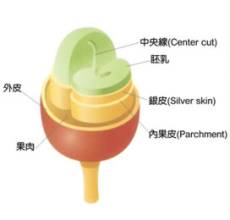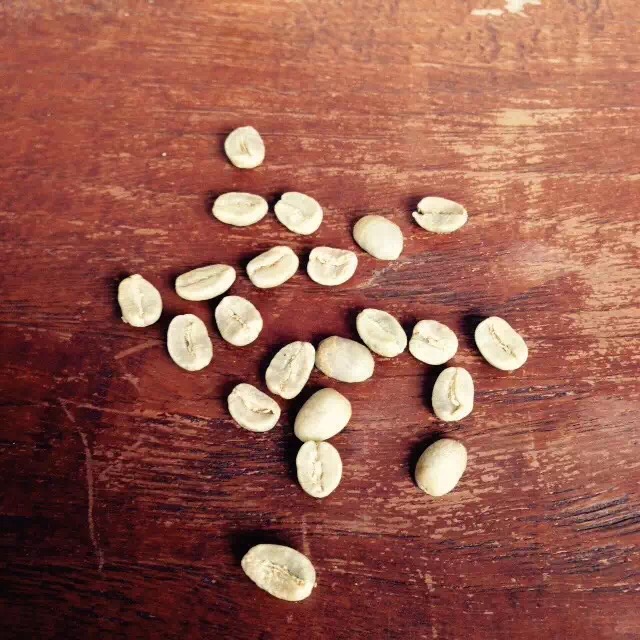Take you into the mysterious world of coffee to find the hometown of coffee, Ethiopia.
What gives half a head a taste of civilization is the bright strawberry juice. But in people's minds, coffee is the symbol of civilization, originating from Ethiopia, witnessing the history of human civilization, the drink of gods and demons, the first taste of civilization, coffee, she has walked brilliantly all the way.
Today, we will work with you to find the hometown of coffee-Ethiopia.
The story of how coffee is grown and consumed all over the world is one of the greatest and romantic stories in history. This
The story begins in Ethiopia on the Cape of Africa, where coffee is likely to be born in the Kafa region. There are all sorts of uncertain theories about the discovery of the method of roasting coffee beans. One of the stories is that Kadia, an Ethiopian shepherd, was surprised to find his sheep excited after eating red coffee berries. A person who knew Kadia told the priest Akuba, but the priest threw the coffee beans into the fire with disdain. The believers who stayed up late that night were not as sleepy and excited as usual, so without the priest's permission, other believers have begun to secretly use the kiwi fruit, and then Akuba gradually accepted the drink.
In Ethiopia, coffee trees are planted next to almost every family's courtyard, and coffee is very common for their daily consumption. Ethiopians do not drink coffee every day. They drink coffee like every meal we eat. In general, families drink coffee at a fixed time, place and ceremony, just like religious services.
Coffee ceremony
First of all, you have to verbally invite friends and neighbors, and then make sure that the arrangements and decorations for the coffee ceremony are ready. Traditionally, the floor of the house is covered with a magnificent carpet and mat, on which the coffee ceremony is held. The carpet was decorated with bright green grass and flowers. A beautifully made coffee cup holder will be set up on the carpet, which is used to hold small coffee cups without handles, and these small coffee cups will hold fragrant coffee. When the guests are full, the coffee ceremony officially begins!
Roast green coffee beans with a bonfire or a small charcoal stove. When the small charcoal stove is lit, specially pick out a few pieces of smoking white charcoal and shake them in every corner of the house, so that the whole house or courtyard will be shrouded in smoke.
Then, the beautiful coffee girl in the white gauze dress began to prepare coffee for everyone. She grabbed a handful of green raw coffee beans, put them in a small iron pot on the charcoal stove, scooped up the water, and washed them with both hands. Then roast the coffee beans with a small wooden shovel, the crackling sound of the coffee beans can be heard, and the rich and attractive fragrance begins to come out.
When the coffee beans are just roasted brown, a servant will walk around the house with a roaster, and the guests will gently fan the steam on themselves with their hands, so that they will be covered with the attractive smell of coffee!
Then, the beautiful coffee girl mashed the coffee beans in a traditional mortar, ground them into fine powder, and prepared them to be boiled in black pottery coffee cans. Sometimes add some cinnamon, cloves or cardamom to add some pleasant and elegant aroma.
The water will boil soon, and the girl will take the coffee can off the stove and place it on the shelf dedicated to the coffee can for a period of time to precipitate the impurities. Let me put a piece of incense on a small ceramic incense rack (there is already a small piece of red-hot coking coal on the incense rack. In this way, the whole house was filled with the smell of incense.
At this time, the girl began to lift the big ears of the coffee pot to fill each cup one by one, and then put down the pot, cup by cup with both hands to the people sitting around. The first round of coffee ceremony (called "Abol" by locals) is followed by the second round ("tona") and the third round ("bereka") coffee ceremony.
When guests are invited to have coffee, be sure to drink it down, and then reach for a second cup. At this time, the beautiful coffee girl will pour the second cup for you very enthusiastically.
The more coffee you drink, the more relaxed and comfortable the guests feel. People keep exchanging thoughts and feelings, their concern for their family, gossip in the neighborhood, and what is going on in the community.
There are snacks to accompany the meal while drinking coffee. Like baked bran, bread or a round pancake called Injera (this is a unique Ethiopian snack made from a local grain called thrush grass).
Traditional coffee ceremonies are more than just drinking coffee. In the unique aroma of coffee, in Ethiopia's unique traditional scene and sound, people also exchange feelings and become more intimate!
The cultivation of coffee
Ethiopian coffee is produced in places such as Harald, Limu, Djimma, Sidamo, Kaffa, Yergacheffe and Wellega. Harald Coffee is the representative of Ethiopian Coffee.
Harald is a name that bears witness to the rise and fall of Ethiopia. It is said that thoroughbred horses are the goal of people in underdeveloped areas, especially when horses are the main means of transportation. At that time Harald in Ethiopia had the best thoroughbred horses of Arab descent in the world. Locals also firmly adhere to the principle that high-quality coffee should be as pure as thoroughbred when grading coffee. As a result of adhering to this concept, Harald is still famous for its quality coffee in the world today. It has strong Arabian flavor, dry aroma with slightly sour wine aroma, suitable mellow, strong pure texture and chocolate aftertaste. Today we can still see pictures of horses on the packaging of Harald coffee beans. This tradition has been preserved to this day, making it possible to figure out the noble value of Harald Coffee at first sight.
What Harald wants to compete with is Yega Xuefei. This coffee is the hardest in Ethiopia. It is mainly grown on small farms, dried in small huts near the farm, and grows almost naturally in a primitive state. Compared with Harald, Yega Chocolate and sour taste is stronger, its sour taste like lemon, a long finish, with a trance of flowers. But Yega Xuefei Coffee is almost monopolized by the German company Dallmyr. It is an almost unattainable luxury.
Sidamo makes people feel milder and softer, with stronger floral fragrance.
In Ethiopia, tasting the rich amorous feelings of coffee, feeling the pleasant smell of coffee, experiencing the girl's hospitality and friendliness, these are Ethiopia's gifts to the world.
Attached: world-famous Ethiopian coffee:
Coffee name
Growing environment
Trait
Average annual output
Limu coffee
Between 1400 and 2000 meters above sea level
Strong nutty aroma with good acidity and wine intensity
About 29000 tons
Gemma Coffee
Between 1400 and 1800 meters above sea level
Slightly sour, with nutty aromas and a long aftertaste
About 70000 tons
Gamby coffee
Between 1500 and 2300 meters above sea level
Gourmet coffee with moderate acidity and fruity aroma
About 34000 tons
Yerqin car Coffee
At 1500 to 2200 meters above sea level
Mocha flavor, with aromas of flowers and spices
About 28000 tons
Sidamo Coffee
At 1400-2200 meters above sea level
Suitable acidity and high quality
About 37000 tons
Harald Coffee
On the highland above 2700 meters above sea level
The world's best coffee, medium acidity, intoxicating exotic flavor, with slightly tipsy, dried fruit aroma, is pure mocha coffee
About 26000 tons
Source: Xuan Yu's Coffee World blog
Important Notice :
前街咖啡 FrontStreet Coffee has moved to new addredd:
FrontStreet Coffee Address: 315,Donghua East Road,GuangZhou
Tel:020 38364473
- Prev

What are the factors that make up small coffee beans? Fundamentals of Coffee introduction
A coffee bean is made up of many factors: caffeine: it has a particularly strong bitter taste and stimulates the central nervous system, heart and respiratory system. Appropriate amount of caffeine can also reduce muscle fatigue and promote digestive juice secretion. Because it promotes kidney function, it is diuretic and helps the body to expel excess sodium ions from the body. But eating too much can lead to caffeine poisoning. Tannin
- Next

Coffee raw bean label: explanation of "GP", "EP" and "SWP"
The words EP or SWP sometimes appear on raw bean labels, which are two common ways to remove caffeine. Caffeine and decaf caffeine, caffeine, is a natural ingredient in coffee. In addition to coffee, many foods we come into contact with in our daily life also contain this ingredient, such as tea, chocolate, cola, cold medicine and so on. (reference article: coffee
Related
- Guji coffee producing area of Guji, Ethiopia: Humbela, Shakiso, Wulaga
- What is the most expensive variety of Qiloso in BOP multi-variety group?
- How to store the coffee beans bought home?
- Why are Yemeni coffee beans so rare now?
- Ethiopian Sidamo all Red Fruit Sun Sun Santa Vini Coffee beans
- SOE is mostly sour? What does it mean? Is it a single bean? what's the difference between it and Italian blending?
- Is Italian coffee beans suitable for making hand-brewed coffee?
- How to choose coffee beans when making cold coffee? What kind of coffee beans are suitable for making cold coffee?
- Just entered the pit to make coffee, what kind of coffee beans should be chosen?
- Can only Japan buy real Blue Mountain Coffee? What are authentic Jamaican Blue Mountain coffee beans?

